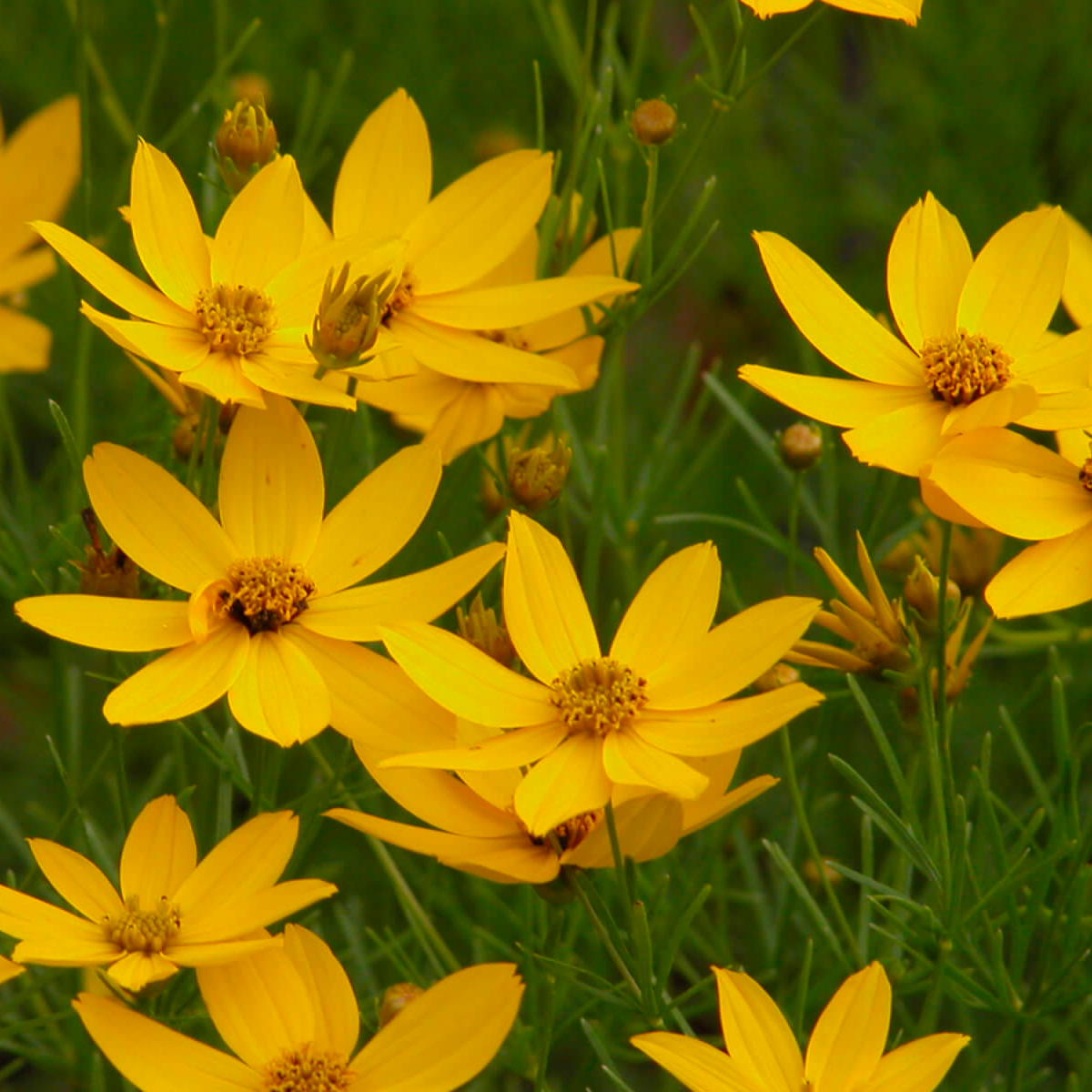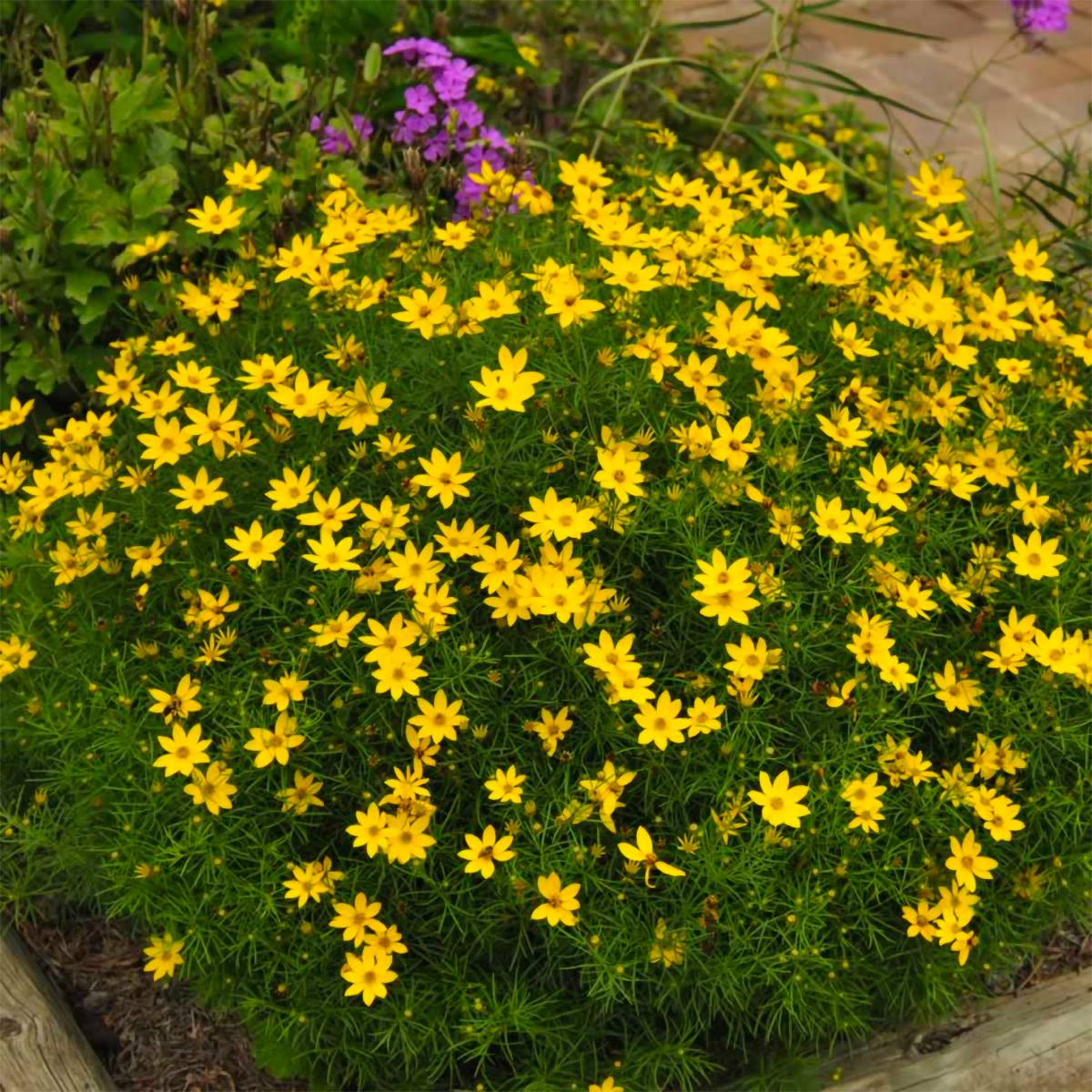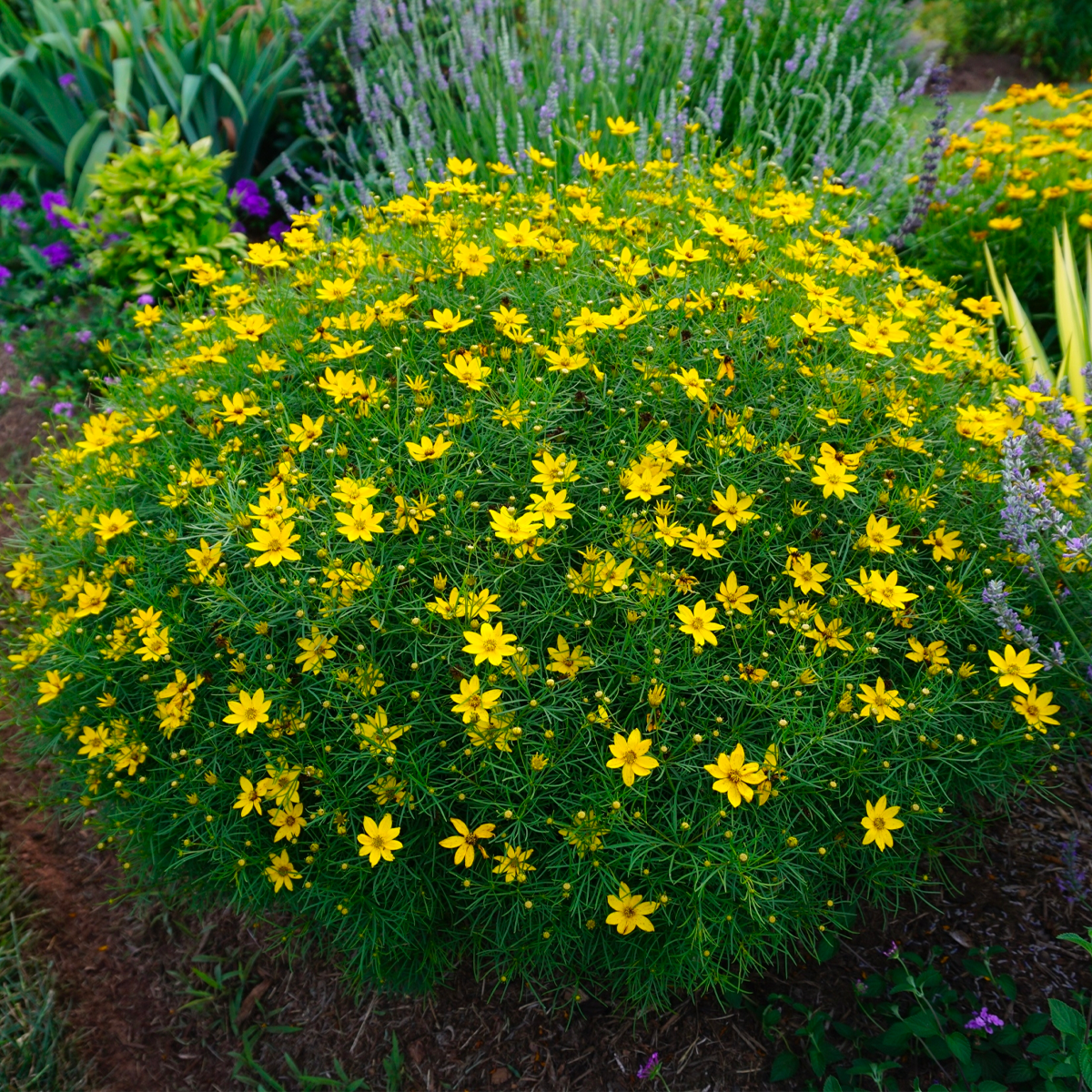The genus name comes from the Greek words koris meaning «bug» and opsis meaning «like» in reference to the shape of the seed which resembles a bug or tick.
Easily grown in dry to medium moisture, well-drained soil in full sun. Thrives in poor, sandy or rocky soils with good drainage. Tolerant of heat, humidity and drought. Prompt deadheading of spent flower stalks can be tedious for a large planting, but does tend to encourage additional bloom and prevent any unwanted self-seeding. Plants may be sheared in mid to late summer to promote a fall rebloom and to remove any sprawling or unkempt foliage. Species plants can spread somewhat aggressively in the garden by both rhizomes and self-seeding.‘Zagreb’ can spread in the garden by rhizomes and self-seeding, particularly in moist fertile soils.
Coreopsis verticillata, commonly called threadleaf coreopsis or whorled coreopsis, is a rhizomatous perennial which typically grows in dense, bushy clumps to 1-3′ tall. Features yellow, daisy-like flowers (1-2″ diameter) with yellow untoothed rays and yellow center disks. Flowers appear singly in loose clusters (cymes) in a profuse and lengthy late spring to late summer bloom. Shearing plants in mid-summer will promote a fall rebloom. Palmately 3-parted leaves with thread-like segments lend a fine-textured and airy appearance to the plant.
Specific epithet means having whorls in reference to the leaves.
Plants in the genus Coreopsis are sometimes commonly called tickseed in reference to the resemblance of the seeds to ticks.
‘Zagreb’ is more compact (to 1.5′ tall) and features bright yellow, daisy-like flowers (1-2″ diameter) with untoothed rays and darker yellow center disks.




